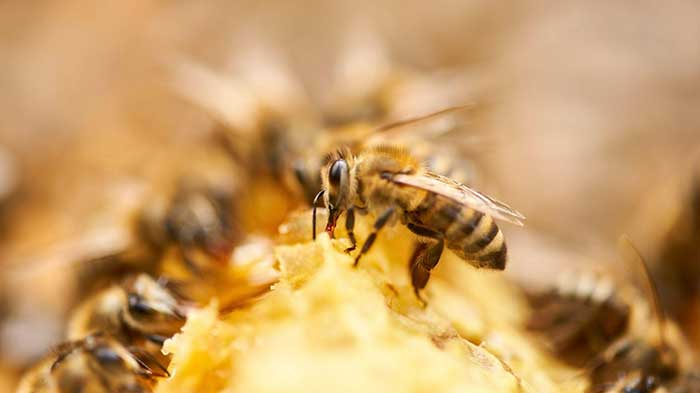

How Do Bees Make Honey?
If you love honey (and we know you do), you owe it all to the bees. Did you know it takes 36 worker bees and 6 weeks to make one tablespoon of honey? The many health benefits and abolsutley transcendant flavour of honey might lead you to wonder, how on great green earth is it made? In this article we delve into the fascinating ways of bees and their remarkable talent for turning flower nectar into liquid gold. Get ready to be amazed by nature's busiest little alchemists – the bees! Keep reading to understand the true value of local honey.
Why do bees make honey?
Carbohydrates, vitamins, minerals—everybody’s gotta eat, right? Bees make honey as a food source to sustain themselves as a colony. Honey bees are pros at producing and storing honey as food—it’s what they do. They do it so well that there’s always a surplus of honey far beyond what they need to sustain their colony over winter.
How Honey is Made in 5 (oversimplified) Steps
- Forage for nectar. Honey production begins with the most adventurous of all the bees: the foraging worker bees. Forager bees can travel anywhere from a few hundred meters to several kilometers from the hive in search of pollen if resources are scant nearby. Beginning in late April or May in Saskatcheawan, worker bees will begin to venture out in search of flowers with good nectar. They have excellent memory, color vision and shape recognition, so they always know how to find the good stuff.
- Collect nectar from flowers. Forager bees use their long, tube-like mouthpart—called a probocsis—to collect nectar from flowers. Get this: a bee must visit a flower 2 million times in order to produce 500g (1lb) of honey, and a single bee will create only about one 12th of a teaspoon (0.8g) of honey during her lifetime. Think about that the next time you put a teaspoon of honey in your tea and it will taste even better!
- Transport nectar to the colony. After they collect nectar from a flower, forager bees store it in a special organ called a honey stomach to bring it back to the hive. During transport, the nectar begins to break down into simpler sugars thanks to enzymes in the honey stomach.
- Process nectar in the hive. Once they arrive back to the hive, the forager bees will pass the nectar by regurgitating it into the mouths of other worker bees (this is called trophallaxis and it’s kindof like how birds feed their young). After receiving the nectar, worker bees begin the process of converting it into honey. To reach its final storage place in a cell in the honeycomb, it is passed mouth to mouth from bee to bee. This further breaks down the sugars and evaporates the water in the nectar.
- Evaporate, dehydrate and seal. The bees fan their wings over the honeycomb cells to create airflow which evaporates the water still left in the nectar. When the water content is less than 20%, the honey is ready and it is sealed with a wax cap into the honeycomb cell for storage as food.
If humans harvest the honey made by bees for food, how do bees survive the Saskatchewan winter?
An apiarist’s job and responsibility is to ensure the colony always has plenty of quality sustenance to thrive. We carefully harvest the surplus honey the bees intended as a food reserve and provide the colony with supplemental feed in exchange. For continued honey production, it’s essential to keep the colony nourished, happy and healthy through the winter until they can begin foraging again. Our bees like to be (covered or kept inside during the coldest months while they feast on whatever we feed them)
Kitako Lake bees eat well
In colder climates like Saskatchewan, where winters can be harsh, beekeepers may provide supplemental feeding to ensure that the colonies have enough food stores to survive until spring. This could involve feeding sugar syrup or fondant..
The best local honey just got better
In case you didn’t love our honey enough already, we hope that knowing how honey is made gives you an even deeper appreciation for the silky nature-made sweetness. Without the natural world and the intricate relationships between plants, pollinators like bees, and the environment, our pallets would never be graced by the absolute perfection and deep pleasure of honey. Allow yourself to join us in marvelling at the incredible complexity and efficiency of honey bee colonies, and savour every bit of honey for all it’s worth!
Organic honey from our small farm to the taste buds on your tongue
You can find Kitako Lake Honey in Saskatchewan at most Sobey's, Your Independent Grocer and Superstore. Find the best local honey near you now: where to buy our honey.